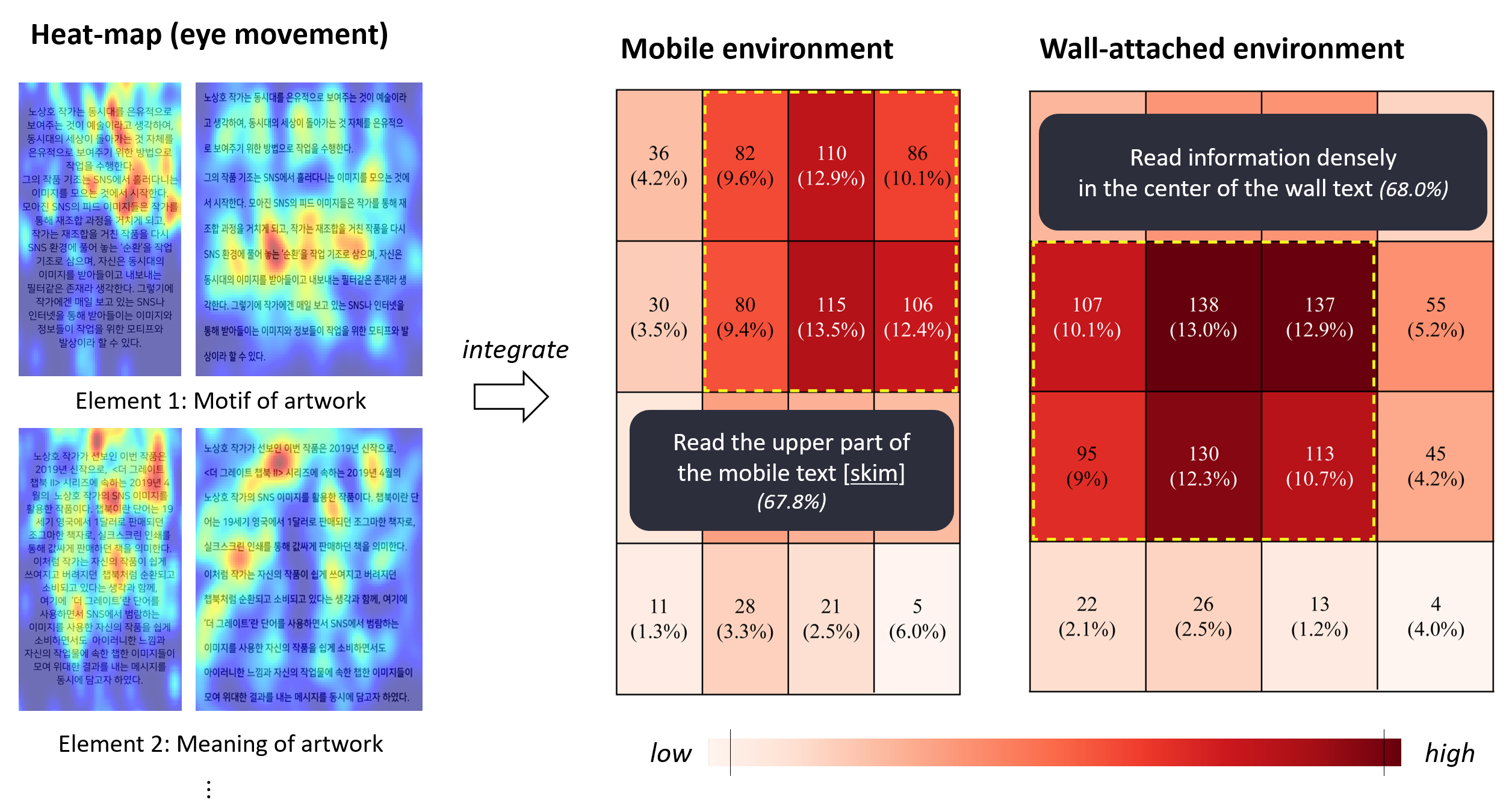Use of eye-tracking in artworks to understand information needs of visitors
SCIE 2021 / International Journal of Human-Computer Interaction (Computer Science & Cybernetics [Q1], IF=4.920)
Taeha Yi, Mi Chang, Sukjoo Hong, and Ji-Hyun Lee
https://doi.org/10.1080/10447318.2020.1818457

Highlights
1. Grasp the five types of accompanying information based on visitors’ information needs
2. Eye-tracking experiments to reveal the differences of visitors’ eye movement
3. Suggest the design guidelines of mobile guidance application for art museum
Abstract
This study examined which accompanying information elements were noticed by visitors while they were looking at artworks, using eye-tracking experiments. First, we conducted an online survey to grasp the types of information that visitors wanted to know, and five elements were obtained. Second, we collected information on these five elements through interviews with one artist. Third, eye-tracking experiments were performed with semi-structured interviews. We set the information delivery media as follows: wall and mobile texts as commonly used in art museums. The results showed that patterns of eye movement of visitors were different according to the information delivery media. Also, we found that there was a correlation between the results of the eye-tracking experiment and visitor interest. This study has limitations in that it is an experiment limited to small sample size and artwork genre; however, it is meaningful in that it was able to grasp the information needs of visitors through eye-tracking.

Fig. Heat maps of participants who viewed mobile text (left) and wall text (right) based on integrating of fixation numbers.
(Eye-tracker: Pupil Labs 120 Hz binocular)